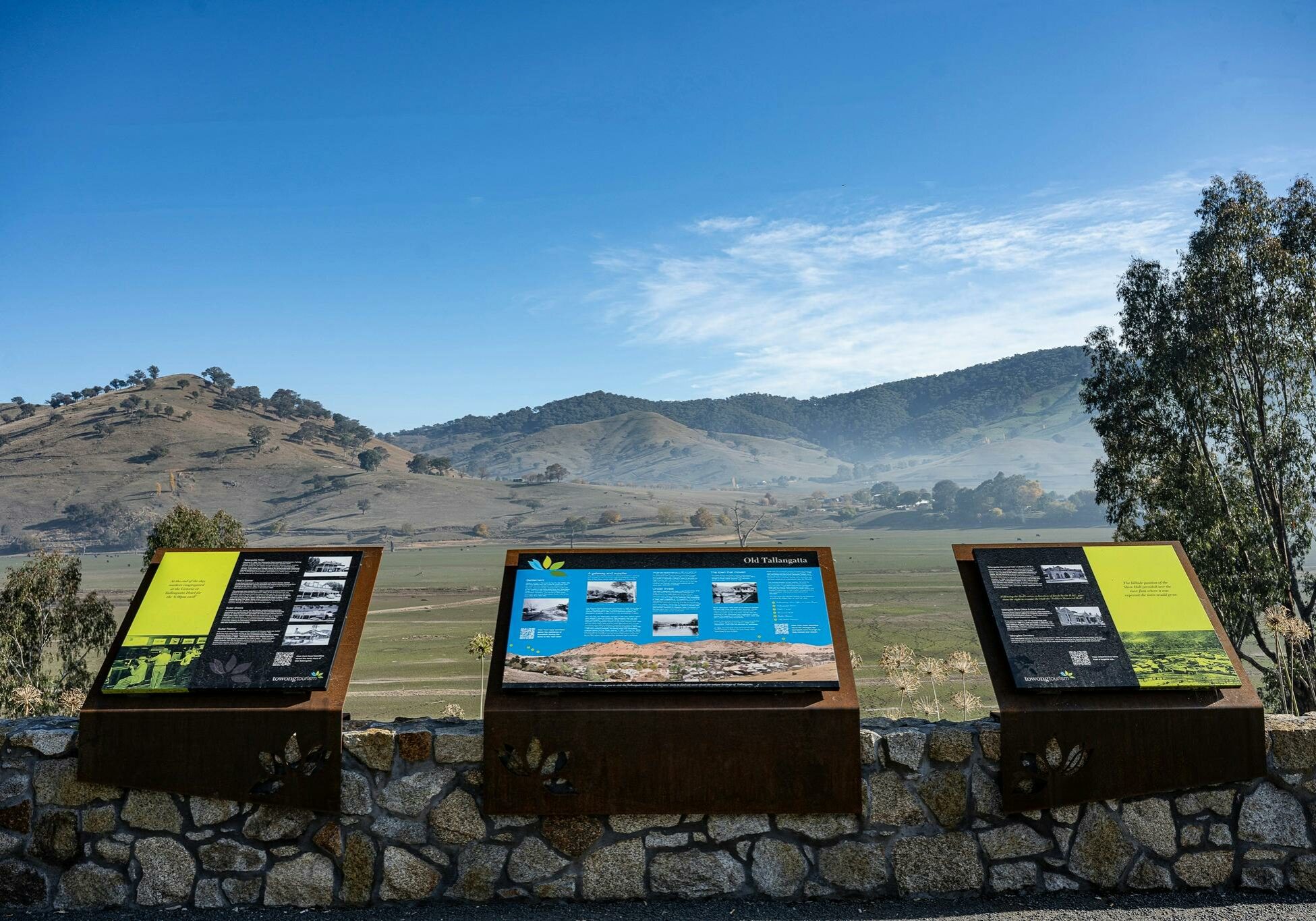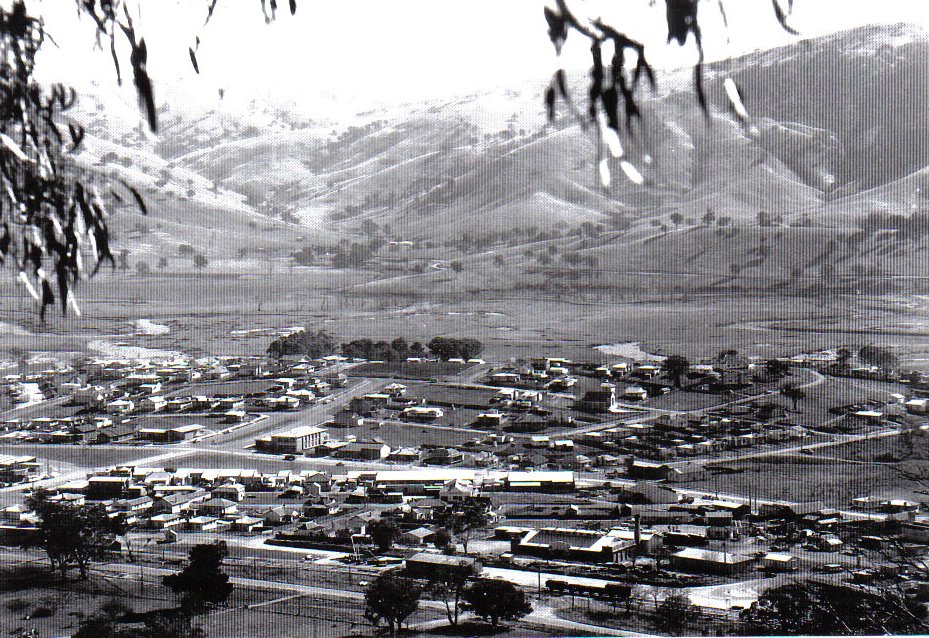The town that moved in the 1950's – Tallangatta is conveniently located on the edge of Lake Hume and only a short drive from Albury/Wodonga.

Old Tallangatta History
This peaceful spot was once home to homes, businesses, and public buildings—until the town was moved in the 1950s to make way for the expansion of Lake Hume.
European settlers arrived in the late 1830s after securing Crown leases to graze and farm the land. The first settlement was at Tatonga but moved quickly to the confluence of the Mitta Mitta River and Tallangatta Creek. Due to flooding, the town relocated again—this time to the area where you now stand.
Officially named in 1854, Tallangatta became a vital gateway to nearby goldfields such as Mount Wills, Mitta Mitta, and Cravensville. In 1869, the Towong Roads Board was proclaimed, and by 1873, Tallangatta had become the Shire's headquarters.

Rail reached Tallangatta in 1891, doubling the population within a decade. A mile-long viaduct took two years to complete. The railway brought jobs and connected local mining and farming industries to broader markets.
The line extended to Cudgewa by 1921, and during the 1950s it was crucial in transporting materials for the Snowy Mountains Scheme. Decommissioned in 1981 and removed by 1988, the route was reborn in 2003 as the High Country Rail Trail, now extending from Wodonga to Shelley.
Since 1918, Tallangatta's future was uncertain. Plans for a reservoir at the confluence of the Mitta Mitta and Murray Rivers threatened the town. Stage one of Lake Hume was completed in 1936, sparing the town temporarily. After WWII, demand for irrigation water rose—and residents were told the town would be flooded.
The Town That Moved
Between 1952 and 1958, Tallangatta was relocated. The State Rivers and Water Supply Commission oversaw the move with a £3 million budget.
Locals preferred relocating to Toorak, a nearby suburb, but authorities chose Bolga—today’s Tallangatta—for its development potential, despite concerns about its sloping terrain and distance from the river.
Over 100 timber homes were relocated, 37 brick homes rebuilt, and 74 prefabricated houses brought in. Thirty-five new buildings were added, including hotels, banks, a butter factory, a hospital, and a modern shopping centre.
Tallangatta was officially reopened by Governor Sir William Slim on June 29, 1956.


Old Tallangatta, Today
Today, Old Tallangatta is a quiet rural locality. When Lake Hume is full, the abundant birdlife and scenic outlook make it hard to believe there was once a bustling township below the waterline. A walk or ride along the High Country Rail Trail is a great way to experience the area.
As the water recedes, remnants of the old roadways and even the footings of buildings can be seen from the Old Tallangatta Lookout. Be sure to stop and read the informative signs, which bring to life the story of the township that once stood before you.
Explore Old Tallangatta
Yellow Picket Fence
The Potted Cumquat
Tallangatta Showgrounds
Stay up to date
Sign up to The Undiscovered for the latest events and deals in the region.
